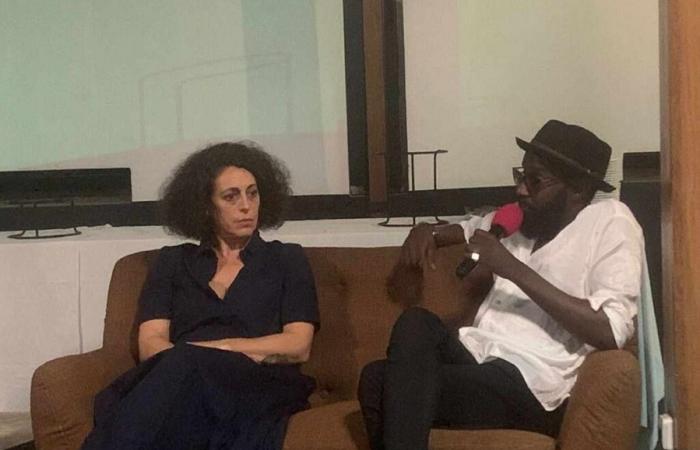
As part of the Biennale of Contemporary African Art, a captivating panel was held under the theme “Plural identities: what bridges can contemporary art create?” “. Moderated by cultural journalist Pape Alioune Sarr, this event brought together two renowned speakers: visual artist Tiziana Manfredi and contemporary art consultant Mohamed A. Cissé. Together, they explored how art can be a powerful tool to transcend differences and build a common humanity.
The panel opened with a general reflection on contemporary crises, evoking “social unbinding” theorized by the Senegalese writer Felwine Sarr. In a world marked by growing inequalities, migration crises, and climate emergencies, the speakers highlighted the role of art in the reinvention of social bonds. Mohamed A. Cissé insisted on the importance of rethinking cultural initiatives by placing them on the same level as socio-economic projects: “The two are interdependent. We have seen nations prosper by putting culture at the center of their development. »
Tiziana Manfredi shared her personal experience as a visual artist living in Dakar for 15 years. She explained how her work was inspired by intercultural encounters and simple everyday gestures: “Beauty is political. It manifests itself in ordinary moments, like a woman throwing water on the ground at dawn. These scenes, captured and shared, create bridges between realities. »
Ms. Manfredi also highlighted the impact of stereotypes and image bingeing in contemporary society, criticizing the role of clichés in reducing identities to fixed constructions. She called for a reappropriation of the gaze through slowness and reflection: “We must relearn to see, to contemplate. Art can bring us back to this essential breath. » The discussion touched on the complex notion of sovereignty in art. Mohamed A. Cissé recalled that while sovereignty is an important tool, it must never be to the detriment of other nations. He took the Venice Biennale as an example, where the pavilions often reflect a global imbalance: “Why do the pavilions of certain countries dominate while others, like those of Senegal or Uzbekistan, remain absent? Cultural sovereignty must be inclusive, an asset rather than an obstacle.”
One of the big challenges raised by the speakers is the perceived elitism of contemporary art. For Tiziana Manfredi, it is essential to bring art out of galleries and closed circles to share it in public spaces, among populations. She mentioned artistic initiatives in working-class neighborhoods, notably in Ouakam, as examples of this decentralization: “Contemporary art must dialogue with the masses, as populist speeches do. Building bridges means including all voices. »
In conclusion, the panel highlighted the power of the artistic imagination to redefine reality. According to Mohamed A. Cissé, “All revolutions began with an idea, with a dream. Contemporary art, far from being limited to aesthetics, is a tool of revolt, a space where beauty and politics meet. »
The discussions, punctuated by concrete examples and personal anecdotes, reaffirmed the importance of art in the construction of a global dialogue. Faced with the challenges of the contemporary world, art offers a way to imagine a true universal, based on the recognition of specificities and particularisms.





